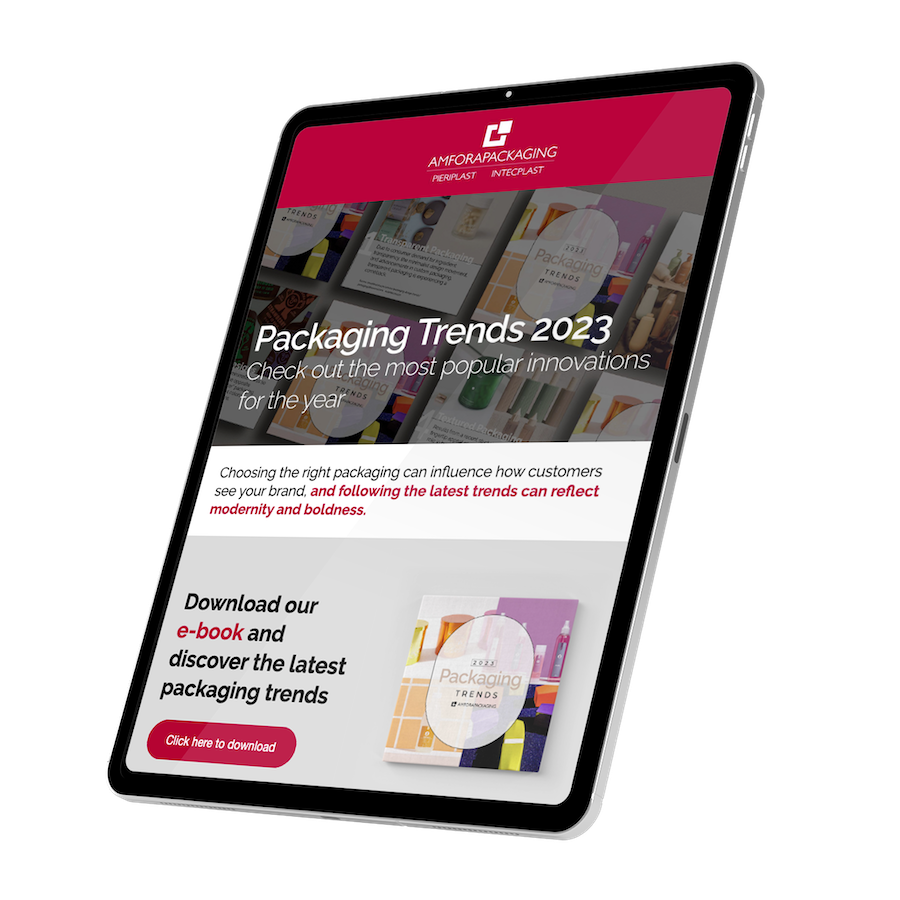Bioplastics, a natural alternative to plastic
What used to be just research has become a necessity today. The market increasingly demands the design of eco-friendly BIO (a prefix of Greek origin meaning related to life) packaging, such as biodegradable and bio-based.
Among the reasons why many companies are looking to innovate and develop eco-friendly packaging are:
- Petroleum is a finite resource and its price generates pressures in the production of plastic packaging.
- New regulations in many countries ban the use of single-use plastics.
- Consumers are more environmentally conscious and prefer planet-friendly products.
- Climate change and the fight of countries and societies to reduce their carbon footprint and generate a lower environmental impact.
At Amfora Packaging, we are committed to building a more sustainable world and we know that every action counts toward reducing our environmental impact. Sustainability is one of our core values and we want to protect future generations and natural resources.
As a result of this thinking, we offer our customers a range of packaging and cap options made from post-consumer recycled materials (PCR) and bio-resins.
What are bioplastics?
Bioplastics or bio-resins refer to plastics made from polymers obtained from plants or other biological materials instead of petroleum, or they are a mixture of petroleum derivatives with organic inputs. They are also known as bio-based plastics or biopolymers.
Many are produced from the fermentation of plant sugars such as corn, soybean, and potato, among others. Fermentation allows the extraction of substances that, when stabilized, take on the appearance of traditional plastic, despite having a different molecular composition.
Bioplastics are included among sustainable resins. Many meet characteristics such as being recyclable, compostable, of non-fossil origin, or using renewable sources (for example, biological materials). They do not interfere with crops and are produced from their waste
In general, polymers can be synthetic, semi-synthetic, and natural, with the latter being BIO-resins. From the point of view of biodegradability, plastics can be biodegradable or non-biodegradable. Biodegradable ones, unlike non-biodegradable ones, are characterized by completely degrading in the presence of CO2 and/or water or by the action of some microorganisms. In both cases, they can be obtained from natural or fossil resources. Knowing this, it is possible to identify different categories of bioplastics in the market. To name a few:
1. Bioplastics of biological origin
Bio-resins are produced from organic matter, mostly of plant origin. Within this category, we find the following types of plastics:
Sustainable and biodegradable bioplastics
These are plastics that, unlike traditional plastic, decompose into natural chemical elements through the action of biological elements such as bacteria, or natural elements such as water or the sun.
Polymers can be produced mostly from polylactic acids (PLA) found in plants such as corn, soy, sugarcane, palm, etc. They can also be made from thermoplastic starch (TPS). Alternatively, they can be manufactured from polyhydroxyalkanoates (PHA) obtained through microorganisms.
PHA plastic is mostly used in the pharmaceutical and medical industry due to its degradation, for surgical sutures, screws, bone plates, ocular grafts, skin substitutes, wound dressings, etc.
TPS plastic can be transformed into foamed materials and can replace polystyrene foam for packaging purposes. It is commonly used as a loose fill or in agriculture for mulch films.
PLA plastic is the most common in the market of biobased plastics and is produced through bacterial fermentation of sugars obtained from different plants. This type of bioplastic is one of the most affordable due to its production, as most come from various activities such as agriculture or the agri-food industry.
PLA plastic is a compostable material, biodegrading under composting conditions and turning into fertilizer, CO2, and water without leaving residues of microplastics or heavy metals.
PLA plastic is used in the textile sector to create upholstery fabrics, in medicine for sutures and implants, in 3D printing, and in the food sector for packaging such as trays, bags, and bottles.
Non-biodegradable bioplastics
These are not compostable plastics. The action of the sun, water, or bacteria does not decompose the plastic. They are recyclable. They include polymers such as bio-polyethylene (BioPE), polyethylene (Bio-PET), or bio-polypropylene (BIO-PP) among others. An example of this plastic is the Bio-PET bottles used for soda.
2. Sustainably from fossil origin
They are fossil-based and biodegradable and can be decomposed by natural elements such as water and the sun. Some examples of these types of polymers are Polyvinyl alcohol (PVA) which dissolves in water, polybutylene adipate terephthalate (PBAT) which biologically degrades in soil, and polybutylene succinate (PBS), among others.
What are the advantages of bio-resins compared to other plastics?
The use of bioplastics in packaging allows for packaging that is as resistant and versatile as plastic packaging, but that decomposes or degrades organically with agents such as water or sunlight without having any environmental impact. Some advantages are:
- Lower carbon footprint
- Energy savings during production
- Facilitate waste reduction
- Do not contain toxic substances or harmful additives to health such as bisphenol A or phthalates
- Do not alter the taste or aroma of food
Bioplastics in Latin America
Bioplastics have been gaining strength in Latin America since 2005 and have now managed to stand out in the market, especially in countries that produce sugarcane, corn, and potatoes, such as Mexico, Brazil, Argentina, Chile, and Colombia. These are the most dynamic markets in the region and are betting on developing more sustainable packaging.
Many of these countries are aware of the importance of conserving the seas, forests, and biodiversity of species. That is why most Latin American countries, through large policies and regulations that prohibit the use of petroleum-derived plastics, are pushing for the elimination of single-use plastics or petroleum-derived plastics and are betting on the use and production of green plastics.
On the other hand, most of these countries are farmers and have a great opportunity to work with crop waste for the production of biobased plastics. Therefore, there is now a great presence of companies dedicated to the production of bio-resins.
How are we applying the sustainable resin theme at Amfora Packaging?
Our products are made with the highest quality and sustainability standards, and we are committed to helping our clients contribute to environmental conservation.
That is why today, thanks to our innovative technologies, we offer packaging with different sustainable resins and use recycled material (PCR) to reduce plastic pollution in our seas, rivers, and lagoons. Our portfolio includes:
- Green HDPE: This resin comes from renewable resources such as sugarcane.
- Cellulose resin: These are cellulose-based biobased resins from sustainable sources such as forestry, perfect for lipsticks and cosmetic cases.
You may also like
Versatility and Sustainability in Multi-Use Packaging
With over 40 years of experience in manufacturing plastic packaging, lids, and containers for various industries, Amfora has been at the forefront of delivering sustainable packaging solutions. Among our sustainable packaging offerings, mono-material packaging stands...
Reducing Environmental Impact: How Companies Can Implement Refillable Packaging
Learn more about reusable packaging and its relevance in the pursuit of sustainability and the reduction of environmental impact.
How to know if a material is truly recyclable?
Learn about the criteria you must consider to determine the recycling rate of a plastic container or material. Reduce your impact on the planet with recyclable packaging!




